Which Battery Storage System Is Right for Your Home?
Energy storage technologies are essential to speed up the replacement of fossil fuels with renewable energy. Battery storage systems will play an increasingly pivotal role between green energy supplies and responding to electricity demands.
Energy storage devices allow homeowners to store energy that has been generated by their solar PV system to then be used at the time they need it most. This could be in the darker colder times of the year as people usually use more electricity around that time.
Energy storage systems for homes, also known as home energy storage or residential energy storage, allow homeowners to store excess energy generated by renewable sources such as solar panels, and use it later when it is needed. There are several types of energy storage systems for homes, including:
Lithium-ion Batteries
These batteries are widely used in energy storage systems for homes because of their high energy density and long lifespan. They can be integrated with solar panels and connected to the grid to provide backup power during outages.
Lead-acid Batteries
These batteries are a more affordable option, but they have a shorter lifespan and lower energy density compared to lithium-ion batteries.
Flow Batteries
These batteries use liquid electrolytes and can provide a longer lifespan than lithium-ion batteries. But they are relatively expensive and less common for residential use.
Compressed Air Energy Storage
These systems use compressed air to store energy, which is then released to generate electricity when needed. They are less common for residential use.
It’s worth noting that energy storage systems can be integrated with smart home technologies and can provide homeowners with more control over their energy usage, help them save money on electricity bills, and increase the reliability of the power supply.
Tesla Powerwall Home Battery
Powerwall stores your solar energy for backup protection, so when the grid goes down your power stays on. Powerwall home battery continues Tesla’s mission and makes clean energy accessible to all, day and night.
For most homes, you can receive whole-home backup to power your entire home during an outage and have energy independence by producing energy with solar. You can also reduce your reliance on the grid and save money on utility bills. Once installed, Powerwall can be monitored and managed using the Tesla app to customize system behavior to meet your energy goals.
Powerwall 3 is a fully integrated solar and battery system, designed to meet the needs of your home. Powerwall 3 can supply more power with a single unit and is designed for easy expansion to meet your present or future needs. Powerwall 3 features an integrated solar inverter allowing solar to be connected directly for high efficiency; it can also be added to existing solar or installed on its own, like Powerwall 2.
Solaredge Batteries
Solaredge offers several battery options for their StorEdge system, including some with a storage capacity of 10 kWh or higher. However, it’s important to note that the specific battery capacity that you’ll need for your solar energy system will depend on factors such as your energy usage patterns, the size of your solar panel array, and your budget.
The Solaredge StorEdge system is compatible with various battery brands and models, including the LG Chem RESU, the BYD Battery-Box LV, and the Tesla Powerwall 2. Each of these batteries has a different storage capacity and price point, so you’ll want to work with a qualified installer to determine the best option for your specific needs.
It’s also worth noting that the Solaredge StorEdge system is designed to be expandable, meaning that you can add additional batteries in the future if you find that you need more storage capacity.
What to Expect from Modern Energy Storage Solutions
Energy Independence
Combine with solar to store excess energy generated during the day to use when you need it most
Technical Specification
13.5 kWh usable capacity. Backup Power. 10 year warranty. Scalable up to 10 Powerwalls
Monitoring
Control your energy from anywhere. The Tesla app offers seamless monitoring to effectively manage your Powerwall and solar panels
Why Choose Powerwall?
Powerwall is a home storage solution that is compatible with existing and new solar PV installations. Powerwall is child and pet friendly with no exposed wires or hot vents; installs easily on the wall, or stack up to ten Powerwalls together on the floor; water-resistant and dustproof for indoor or outdoor installation. Powerwall’s backup gateway will protect your home from the next power outage, keeping your lights on, phones charged, and no puddles under the fridge.
Benefits of Having Energy Storage for your PV System
Increased Energy Independence
Energy storage allows homeowners to store excess energy generated by their PV system during the day and use it later when it is needed, which can decrease their reliance on the traditional power grid.
Increased Self-Consumption
Energy storage allows homeowners to use more of the energy generated by their PV system, rather than sending it back to the grid and receiving a lower rate of compensation.
Backup Power
Energy storage can provide backup power during outages, which can be especially useful in areas with a high risk of power outages.
Increased Reliability
Energy storage can ensure that a homeowner has a consistent supply of power, even if the traditional power grid is down.
Economic Benefits
Energy storage can help homeowners save money on their electricity bills by reducing the amount of energy they need to purchase from the grid. Additionally, some states offer rebates and tax incentives for homeowners who install energy storage systems.
Time-Of-Use Management
Energy storage can help you manage your energy consumption based on time of the day, to utilize the energy during peak hours and save money.
Improved Grid Management
Energy storage can help balance the grid by releasing stored energy during peak demand, which can help prevent brownouts and blackouts.

